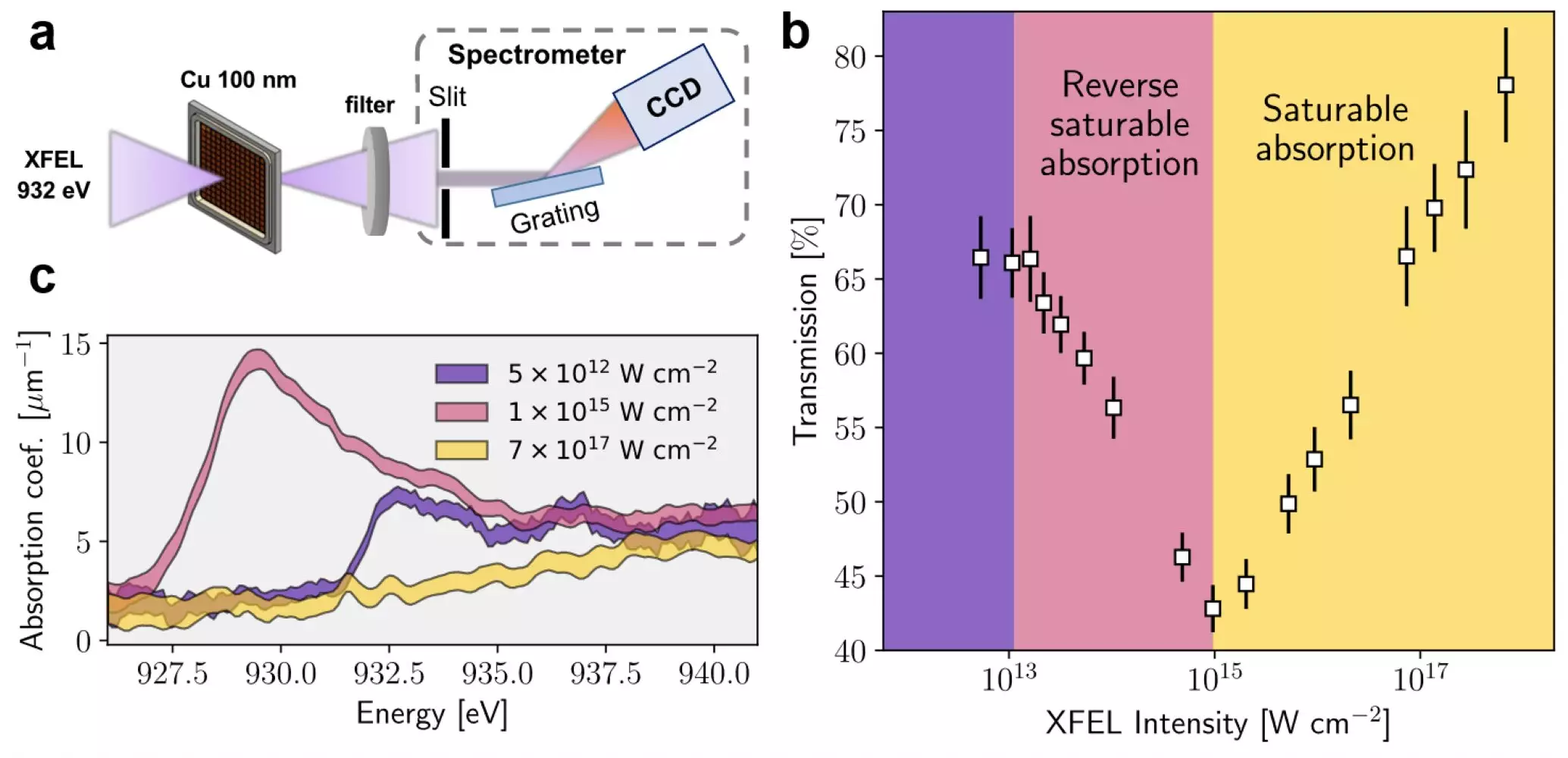Experiments conducted at the European XFEL have led to the generation of states of matter that closely resemble extreme conditions found in the interior of planets or during the implosion of an inertial fusion reactor. These studies not only provide insights into such exotic environments but also pave the way for measuring ultra-short phenomena that were previously challenging to observe.
Warm Dense Matter (WDM) is a unique state that exists in a temperature range where substances exhibit characteristics of both condensed matter and weakly coupled plasmas. Typically, WDM is defined to occur between 5,000 Kelvin to 100,000 Kelvin at pressures of several hundred thousand bar. This state of matter is unstable in everyday conditions and is notoriously difficult to produce and study in a laboratory setting.
The European XFEL has emerged as a valuable tool for generating and analyzing warm dense matter. By focusing intense X-ray laser pulses on materials like copper, researchers have been able to induce a transition to the WDM state and study its properties in detail. The ability of XFEL to drive such transitions opens up new avenues for exploring the behavior of matter under extreme conditions.
One of the key observations made by researchers at European XFEL is the drastic change in opacity exhibited by materials when subjected to intense X-ray pulses. Metals like copper can transition from being opaque to transparent based on the intensity of the X-ray beam. This shift in opacity provides crucial insights into the creation and characterization of warm dense matter, which is essential for advancing inertial confinement fusion technologies.
Understanding material opacity under extreme conditions is critical for the success of inertial confinement fusion, where precise control over energy absorption and transmission is paramount. By studying how materials behave under intense X-ray pulses, researchers can optimize the conditions necessary for efficient fusion reactions. The ability to manipulate opacity at a rapid pace highlights the need for even shorter X-ray pulses to fully capture electron dynamics in WDM.
The recent advancements at European XFEL in generating attosecond X-ray pulses open up exciting possibilities for studying ultra-fast phenomena in warm dense matter and beyond. With the ability to ‘film’ the movement of electrons during the formation of WDM or chemical reactions, researchers can gain a deeper understanding of complex processes such as catalysis. The relevance of this research area is underscored by the recognition received by leading physicists in the field, highlighting the significance of continued exploration in this domain.
The research conducted at European XFEL on warm dense matter represents a groundbreaking endeavor that sheds light on the behavior of matter under extreme conditions. By leveraging cutting-edge X-ray laser technologies, scientists have unlocked new opportunities to study and manipulate states of matter that were previously inaccessible. The implications of this research extend beyond fundamental science to potential applications in energy production, chemical catalysis, and material science, making it a truly transformative area of study.


Leave a Reply